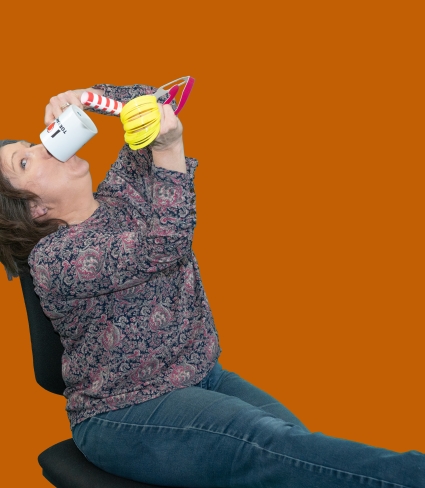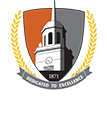
Susan Keller-Mathers, Ed.D.
Associate Professor Chase Hall 246Office: (716) 878-4070
Email: kellersm@buffalostate.edu
Dr. Susan Keller-Mathers is an associate professor at the Center for Applied Imagination. Keller-Mathers holds a B.S. in elementary education, an M.S. in creativity, and an Ed.D. in curriculum and instruction. Keller-Mathers teaches graduate courses in creativity, chairs the Curriculum Committee, and serves on leadership teams of various departments across campus dedicated to infusing creative learning into their teaching and learning practices. Keller-Mathers developed a video series demonstrating the use of creative problem-solving tools in groups and has published over 30 articles, chapters, and books on creativity, creative behavior, and the use of deliberate methods to facilitate creative learning.
Working in over a dozen countries, her passion is designing and delivering creative learning and creative problem-solving experiences, facilitating educational change, and bringing creativity and a greater understanding of a global perspective to the educational arena. As a leadership team member, Keller-Mathers also guides the designing and delivering of innovative superintendent and principal post-master’s training as well as the post-master’s teacher leader certificate and the conflict and analysis resolution master’s program. For over two decades, Keller-Mathers has served as an adjunct with International Graduate Programs for Educators, teaching graduate creativity courses to international educators in the Americas, Africa, Middle East, and Asia, including serving as the interim director of that program.
Keller-Mathers’s passion is educating the next generation of creativity experts who will utilize their degree in creativity in diverse professional and personal arenas. For nearly three decades she has continued the development of the Torrance Incubation Model (TIM) for designing learning that weaves creativity into lesson, unit, course, and training frameworks, assisted with the development of new initiatives in creative learning in early childhood through university, and facilitated creative-problem solving for organizational change.
Publications
Books
Keller-Mathers, S.; Puccio, K. & Treffinger, D. (2000). Big tools for young thinkers: Using creative problem solving tools with primary students. Waco, TX: Prufrock Press. (originally published in 1998 by Center for Creative Learning)
Puccio, K.; Keller-Mathers, S. & Treffinger, D. (2000). Adventures in real problem solving: Facilitating creative problem solving with primary students. Waco, TX: Prufrock Press. (originally published in 1998 by Center for Creative Learning)
Book Editorship
Puccio, G., Burnett, C., Cabra, J, Fox, J.M.,Keller-Mathers, S., Murdock, M. & Yudess, J. (2008) (Eds.), Integrating inquiry and action: International conference on creativity and innovation management second community meeting conference proceedings Book 1. Buffalo, NY: International Center for Studies in Creativity, Buffalo State.
Puccio, G., Burnett, C., Cabra, J, Fox, J.M., Keller-Mathers, S., Murdock, M. & Yudess, J. (2008) (Eds.), Integrating inquiry and action: International conference on creativity and innovation management second community meeting conference proceedings Book 2. Buffalo, NY: International Center for Studies in Creativity, Buffalo State.
Book Chapters
Bauer, D., Hetherly, D. & Keller-Mathers, S. (2009). Using creative problem solving in environmental projects. In T. Grant & G. Littlejohn (Eds.), Teaching green- high school years: Hands-on learning for grades 9-12. Toronto: Green Teacher.
Keller-Mathers, S. (2000). Tanzania through a creativity eye. In M. I. Stein (Ed.), CreativityÕs Global Correspondents 2000 (pp. 147-150). NY: Winslow Press.
Keller-Mathers, S. (2003). Creative problem solving for young children. In K.W. McCluskey & D. J. Treffinger (Eds.), Enriching teaching and learning for talent development (pp. 41-46). Sarasota, FL: Center for Creative Learning.
Keller-Mathers, S. & Firestien, R. (1994). Additional measures of creativity and related constructs. In S. Isaksen, R. Firestien, M. Murdock, G. Puccio, & D. Treffinger (Eds.) The assessment of creativity (pp. 65-103). Buffalo, NY: Center for Studies in Creativity.
Keller-Mathers, S. & Murdock, M. (1999). Research support for a conceptual organization of creativity. In A. Fishkin, B. Cramond & P. Olszewski-Kubilius (Eds.), Investigating creativity in youth (pp. 49-71). Cresskill, NJ: Hampton Press.
Murdock, M. & Keller-Mathers, S. (2008). Designing and delivering training for creative thinking using Torrance Incubation Model of Teaching and Learning. In Puccio, G., Burnett, C., Cabra, J, Fox, J.M., Keller-Mathers, S., Murdock, M. & Yudess, J.(Eds.), Integrating inquiry and action: International conference on creativity and innovation management second community meeting conference proceedings Book Two (pp. 70-96). Buffalo, NY: International Center for Studies in Creativity, Buffalo State.
Piirto, J. & Keller-Mathers, S. (2013). Mary Meeker (1921-2003) A deep commitment to individual differences. In A. Robinson & J. Jolly (Eds.). Gifted education: A century of illuminating lives. New York, NY: Routledge.
Puccio, G. & Keller-Mathers, S. (2007). Enhancing thinking and leadership skills through creative problem solving. In Ai-Girl et al. (Eds.), Creativity: A handbook for teachers (pp. 281-301). Singapore: World Scientific.
Journals/Encyclopedia Articles
Keller-Mathers, S. (2009).Creative Teaching. In B. Kerr (Ed.) Encyclopedia of Giftedness, Creativity, and Talent (pp. 197-200). Thousand Oaks, CA: Sage.
Keller-Mathers, S. (2009). Creative women: An artist and engineer's story. Academic Exchange Quarterly, 13(2), 149-154.
Keller-Mathers, S. (2010). A qualitative study of women of creative achievement. The International Journal of Learning, 17(3), 117-125.
Keller-Mathers, S. (2011). Building passion and potential for creative learning in higher education. In A. Wright, M. Wilson, & D. Maclsaac (Eds.). Society for Teaching and Learning in Higher Education Collected Essays on Learning and Teaching. Windsor, ON.
Keller-Mathers, S. & Pagliaroli, T. (2009). Creative learning, thinking and problem solving: Content’s 21st century partner in education. Pennsylvania Educational Leadership, 29(1), 24-32.
Murdock, M. & Keller-Mathers, S. (2008). Teaching and learning creatively with the Torrance Incubation Model: A research and practice update. International Journal of Creativity and Problem Solving, 18(2), 11-33. (P)
Murdock, M. & Keller-Mathers, S. (2011). Programs and courses in creativity. Encyclopedia of Creativity. (2nd Ed.), Thousand Oaks, CA: Sage.
Published Dissertation
Keller-Mathers, S. (2005). A qualitative study of women of extraordinary creative accomplishment. Ann Arbor, MI: UMI ProQuest Co.
Magazines
Bauer, D., Hetherly, D. & Keller-Mathers, S. (2003). From learners to leaders: Using creative problem solving in environmental projects. Green Teacher, 72, 6-12.
Keller, S. (l988, February). Celebrate your imagination. Instructor, 79, 34-37.
Keller-Mathers, S. (1996, December). ALoU: Advantages, limitations, overcoming limitations and unique qualities. THINK, 31-35.
Keller-Mathers, S. (1992, February). Tips for a toddler. Parents Magazine, 12.
Keller-Mathers, S. (1990, March). Encouraging a lifetime of thinking. WNY Family Magazine, 6(12), 5-7.
Paper Presentations
Keller-Mathers, S. (2006, June). The lives of extraordinary women of creative accomplishment: Results of a qualitative study. Paper presented at the 52nd Annual Creative Problem Solving Institute. Chicago, IL.
Keller-Mathers, S. (2005, August). Researching the lives of extraordinary creative women. Paper presented at the 16th Biennial World Conference World Council for the Gifted. New Orleans, LA.
Keller-Mathers, S. (2007, March). Life stories of creative women. Paper presented at the International American Creativity Association Conference, Austin, TX.
Keller-Mathers, S. (2010, June). Women of creative achievement. Virtual paper presented at the 17th International Conference on Learning at the Hong Kong Institute of Education, Hong Kong.
Murdock, M. & Keller-Mathers, S. (2008, May). Designing and delivering training for creative thinking using the Torrance Incubation Model of Teaching and Learning. Paper presented at the 2nd Creativity and Innovation Management International Community Conference, Buffalo, NY.
Newsletters
Keller-Mathers, S. (1990, September). How to Write a Project/Thesis and Survive. Creative Connections Newsletter, 3-5.
Keller-Mathers, S. (2007, July). Lessons from mature women and beyond: Thoughts on nurturing creativity. Celebrate Creativity Newsletter, Creativity Division National Association of Gifted Children.
Keller-Mathers, S. & Murdock, M. (2002, Fall). Teaching the content of creativity using the Torrance Incubation Model: Eyes wide open to the possibilities of learning. National Association of Gifted Children Celebrate Creativity Newsletter, 13 (2), 7-9.
Murdock, M. & Keller-Mathers, S. (2002, Fall). The foundation of the Torrance Incubation Model: Identifying and using a creativity skill set. National Association of Gifted Children Celebrate Creativity Newsletter, 13 (2), 5-6,13.
Murdock, M. & Keller-Mathers, S. (2002, Fall). Teaching for creativity: Where thereÕs a will, thereÕs a way. National Association of Gifted Children Celebrate Creativity Newsletter, 13 (2), 3,4, 10-12.
Puccio, K. & Keller-Mathers, S. (1996). Hands on CPS, the primary way. Creative Learning Today, 6(4), 2-3.
Unpublished and Works of Limited Circulation
Keller-Mathers, S. (1996). An eye on creative products. In, M.C. Zich, G.J. Puccio, and M. Murdock, (Eds.), The Literature Paper Series for Creative Studies Courses. Unpublished masterÕs project, State University College at Buffalo, Buffalo, NY.
Puccio, K.; Keller-Mathers, S. & Treffinger, D. (1995). Creative problem solving for primary students: A professional development module. Sarasota, FL: Center for Creative Learning Training Manual.
Keller-Mathers, S. (1990, August). Impact of creative problem solving training on participants' personal and professional lives. Unpublished master's project, Buffalo State College, Buffalo, NY.

